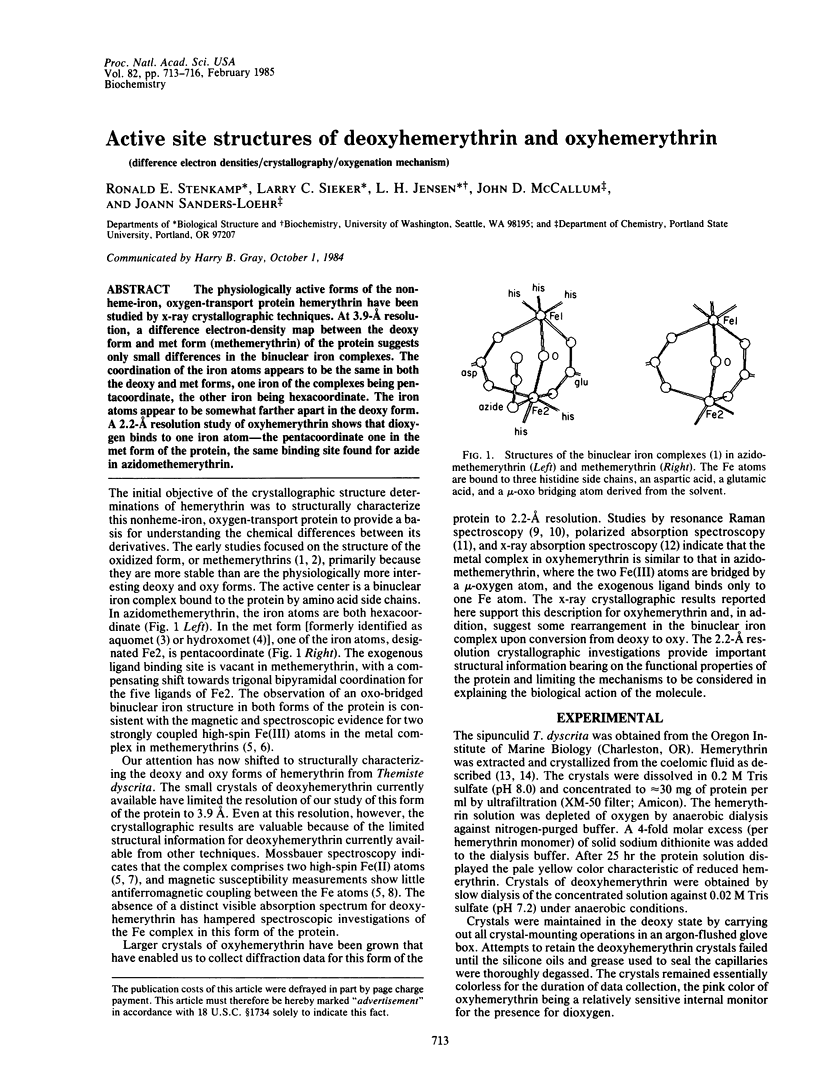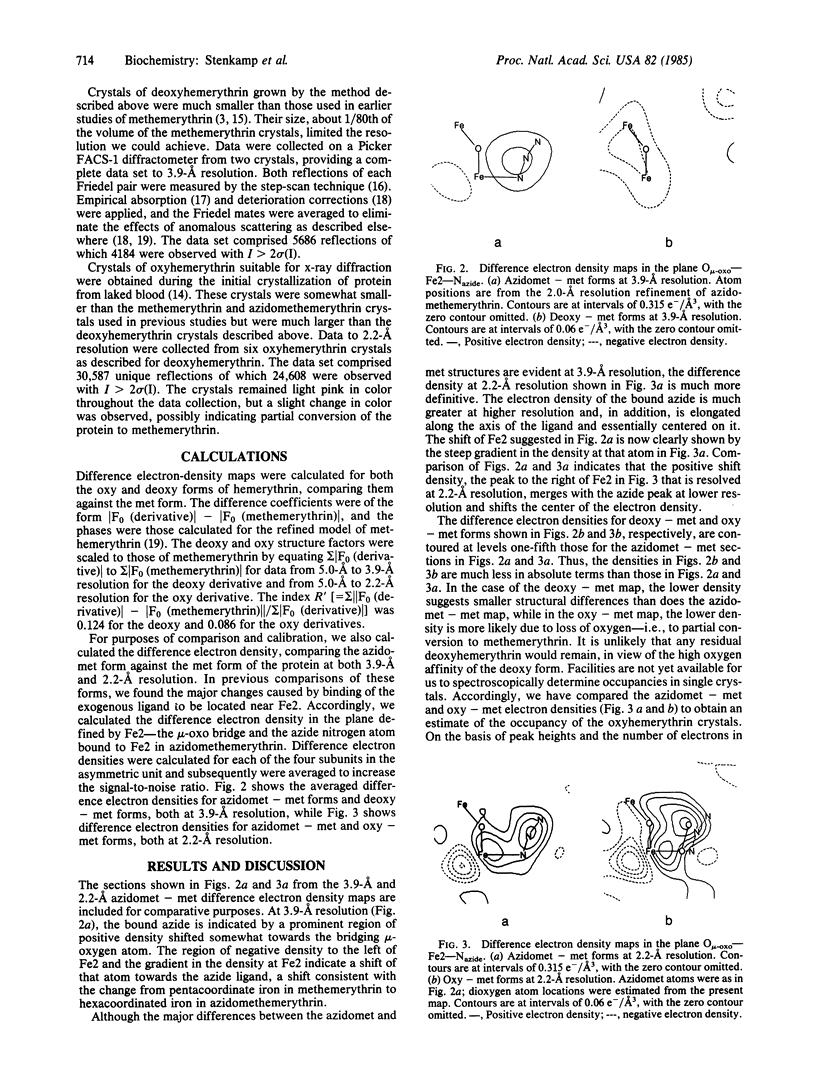Abstract
The physiologically active forms of the nonheme-iron, oxygen-transport protein hemerythrin have been studied by x-ray crystallographic techniques. At 3.9-A resolution, a difference electron-density map between the deoxy form and met form (methemerythrin) of the protein suggests only small differences in the binuclear iron complexes. The coordination of the iron atoms appears to be the same in both the deoxy and met forms, one iron of the complexes being pentacoordinate, the other iron being hexacoordinate. The iron atoms appear to be somewhat farther apart in the deoxy form. A 2.2-A resolution study of oxyhemerythrin shows that dioxygen binds to one iron atom--the pentacoordinate one in the met form of the protein, the same binding site found for azide in azidomethemerythrin.
Full text
PDF



Selected References
These references are in PubMed. This may not be the complete list of references from this article.
- Barlow C. H., Maxwell J. C., Wallace W. J., Caughey W. S. Elucidation of the mode of binding of oxygen to iron in oxyhemoglobin by in frared spectroscopy. Biochem Biophys Res Commun. 1973 Nov 1;55(1):91–96. doi: 10.1016/s0006-291x(73)80063-4. [DOI] [PubMed] [Google Scholar]
- Dawson J. W., Gray H. B., Hoenig H. E., Rossman G. R., Schredder J. M., Wang R. H. A magnetic susceptibility study of hemerythrin using an ultrasensitive magnetometer. Biochemistry. 1972 Feb 1;11(3):461–465. doi: 10.1021/bi00753a026. [DOI] [PubMed] [Google Scholar]
- Dunn J. B., Addison A. W., Bruce R. E., Loehr J. S., Loehr T. M. Comparison of hemerythrins from four species of sipunculids by optical absorption, circular dichroism, fluorescence emission, and resonance Raman spectroscopy. Biochemistry. 1977 Apr 19;16(8):1743–1749. doi: 10.1021/bi00627a035. [DOI] [PubMed] [Google Scholar]
- Garbett K., Darnall D. W., Klotz I. M., Williams R. J. Spectroscopy and structure of hemerythrin. Arch Biochem Biophys. 1969 Dec;135(1):419–434. doi: 10.1016/0003-9861(69)90559-1. [DOI] [PubMed] [Google Scholar]
- KLOTZ I. M., KLOTZ T. A., FIESS H. A. The nature of the active site of hemerythrin. Arch Biochem Biophys. 1957 Jun;68(2):284–299. doi: 10.1016/0003-9861(57)90360-0. [DOI] [PubMed] [Google Scholar]
- Kitagawa T., Ondrias M. R., Rousseau D. L., Ikeda-Saito M., Yonetani T. Evidence for hydrogen bonding of bound dioxygen to the distal histidine of oxycobalt myoglobin and haemoglobin. Nature. 1982 Aug 26;298(5877):869–871. doi: 10.1038/298869a0. [DOI] [PubMed] [Google Scholar]
- Okamura M. Y., Klotz I. M., Johnson C. E., Winter M. R., Williams R. J. The state of iron in hemerythrin. A Mössbauer study. Biochemistry. 1969 May;8(5):1951–1958. doi: 10.1021/bi00833a027. [DOI] [PubMed] [Google Scholar]
- Phillips S. E., Schoenborn B. P. Neutron diffraction reveals oxygen-histidine hydrogen bond in oxymyoglobin. Nature. 1981 Jul 2;292(5818):81–82. doi: 10.1038/292081a0. [DOI] [PubMed] [Google Scholar]
- Stenkamp R. E., Sieker L. C., Jensen L. H. Crystallographic studies of azide, thiocyanate and perchlorate complexes of methemerythrin. J Mol Biol. 1978 Dec 15;126(3):457–466. doi: 10.1016/0022-2836(78)90052-9. [DOI] [PubMed] [Google Scholar]
- York J. L., Bearden A. J. Active site of hemerythrin. Iron electronic states and the binding of oxygen. Biochemistry. 1970 Nov 10;9(23):4549–4554. doi: 10.1021/bi00825a014. [DOI] [PubMed] [Google Scholar]
- de Waal D. J., Wilkins R. G. Kinetics of the hemerythrin-oxygen interaction. J Biol Chem. 1976 Apr 25;251(8):2339–2343. [PubMed] [Google Scholar]


